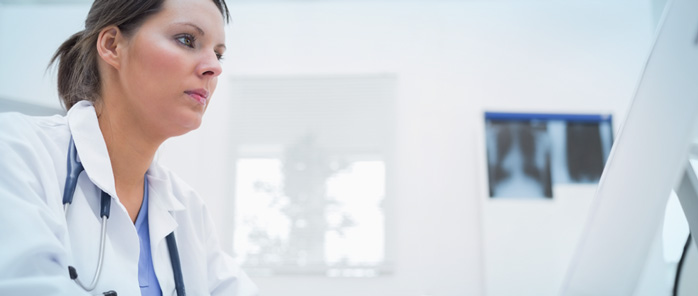Becoming a physician assistant (PA) requires intensive training, plenty of opportunities to interact with patients, lots of study, and, of course, certification. However, initial certification is not the end of the story. To maintain excellence, you must maintain your certification by taking part in continuous professional development throughout your career. Important aspects of the physician assistant requirements for recertification are self-assessment credits and performance improvement credits, including understanding what they are, why they are required, and how to earn them.
Physician Assistant Requirements for Maintaining Your Certification
Practicing PAs must maintain their national certification by logging earned continuing medical education (CME) credits with the National Commission on Certification of Physician Assistants (NCCPA). They must also meet the CME requirements of the state in which they are practicing. Most states (47 and the District of Columbia) require PAs to complete CME before they can renew a state license, and 20 states require CME in a specified topic.
Self-assessment activities were developed as a way to incorporate into your practice all six of the PA competencies — medical knowledge, interpersonal and communication skills, patient care, professionalism, practice-based learning and improvement, and systems-based practice. Such activities are an excellent way for PAs to assess their skills and gauge how well they are keeping up with current knowledge in the field, thereby leading to improvements in patient outcomes.
The NCCPA believes so strongly in the importance of self-assessment that it has recently added two new categories for PAs to choose from when working toward the 100 CME credits that PAs must earn every 2 years to count toward recertification. These new categories are Self-Assessment (SA) and Performance Improvement CME (PI-CME) activities.
According to the American Academy of PAs (AAPA), 20 of the 50 credits required for Category 1 must be earned by taking part in AAPA-accredited self-assessment and/or PI-CME activities. Thus, PAs can combine their PI-CME and SA credits during each 2-year cycle, or they can choose to concentrate on just one of those activities per cycle. At the end of 8 years (i.e., four 2-year CME cycles), PAs must have earned 40 Category-1 CME credits through self-assessment activities and 40 Category-1 CME credits through PI-CME activities. During the fifth CME cycle (years 9 and 10), there are no requirements to accrue self-assessment or PI-CME credits, so PAs are left free to choose the form of CME that will be most useful for them to prepare for the recertification exam. (Learn more about the NCCPA exam blueprint and changes to the NCCPA Certification Requirements).
Self-Assessment Activities
Whereas high-stakes exams like the Physician Assistant National Certifying Exam (PANCE) or recertifying exam (PANRE) test your core knowledge, self-assessment activities are meant to be a less stressful and more practical and relevant way of obtaining feedback on your performance so that you can correct any gaps in your knowledge. There are currently 129 self-assessment activities that the AAPA has approved for AAPA Category-1 Self-Assessment CME credit, and the list is continually growing. The AAPA intends to eventually have activities available in every specialty area.
PI-CME Activities
Initially developed by the American Medical Association in 2005, PI-CME activities have been designed to highlight the areas of a PA’s practice that may be in need of improvement with regard to team-based care. This three-stage process — performing a self-assessment, developing and following a plan of improvement, and performing a reassessment to measure the effects of the improvement plan — allows PAs to reflect on ways to improve their practice and gives them the opportunity to consider systemic changes that they might make to improve patient care. For a list of approved AAPA Category-1 PI-CME activities, go to the AAPA website.
Navigating Self-Assessment and PI-CME Credits
The AAPA is the only organization that designates and approves self-assessment and PI-CME activities and credits. There is no reciprocity with other credit systems, so you can only log the activities that the AAPA has specifically approved for self-assessment or PI-CME credit under those categories. The AAPA’s learning management system allows PAs to locate and track completion of self-assessment and PI-CME activities.
The self-assessment and PI-CME programs of many organizations and societies have been approved by AAPA for PA credit. For example, as part of the Massachusetts Medical Society, NEJM Knowledge+ Family Medicine Board Review allows PAs to earn both Category-1 CME credits and, more importantly, up to 20 AAPA Category-1 Self-Assessment CME credits.
The AAPA is continuing to develop options for self-assessment and PI-CME activities in a broad range of clinical specialty areas, and they will also provide specific requirements for PAs who want to create their own PI-CME activities. Be sure to visit the AAPA’s Learning Central to keep up with all the options for earning your self-assessment and PI-CME credits.
You can learn more about how NEJM Knowledge+ Family Medicine Board Review can help PAs earn CME while preparing for PANCE or PANRE.
- NEJM Knowledge+ for Physician Assistants
- NCCPA Certification and Maintenance Requirements
- Taking the PANCE/PANRE Exam
- PANCE/PANRE Review Resources
New! In Practice — a new Journal Watch blog by physician assistants and nurse practitioners — for all health care providers



This is an excellent review of requirements for PAs to maintain certification. The AAPA and NCCPA recognize the importance of modernizing methods of demonstrating maintenance of competence to practice.